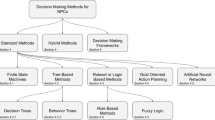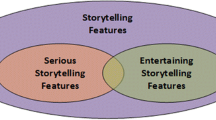Abstract
Existing online multiplayer games typically use a client-server model, which introduces added latency as well as a single bottleneck and single point of failure to the game. Distributed multiplayer games minimize latency and remove the bottleneck, but require special synchronization mechanisms to provide a consistent game for all players. Current synchronization methods have been borrowed from distributed military simulations and are not optimized for the requirements of fast-paced multiplayer games. In this paper we present a new synchronization mechanism, trailing state synchronization (TSS), which is designed around the requirements of distributed first-person shooter games.
We look at TSS in the environment of a mirrored game architecture, which is a hybrid between traditional centralized architectures and the more scalable peer-to-peer architectures. Mirrored architectures allow for improved performance compared to client-server architectures while at the same time allowing for a greater degree of centralized administration than peer-to-peer architectures.
We evaluate the performance of TSS and other synchronization methods through simulation and examine heuristics for selecting the synchronization delays needed for TSS.
Similar content being viewed by others
References
G. Armitage, “pkthisto-0.1.2,” 2001, http://opax.swin.edu.au/~garmitage/q3/quake-server-mods.html.
N. Baughman and B. Levine, “Cheat-proof playout for centralized and distributed online games,” in Proc. Infocom 2001, 2001.
Y. Bernier, “Latency compensating methods in client/server in-game protocol design and optimization,” in Proc. of GDC 2001, 2001.
E. Cronin, B. Filstrup, and A. Kurc, “A distributed multiplayer game server system,” UM EECS589 Course Project Report, 2001, http://www.eecs.umich.edu/~bfilstru/quakefinal.pdf.
S. Dykes, K. Robbins, and C. Jeffery, “An empirical evaluation of client-side server selection algorithms,” in Proc. of IEEE Infocom 2000, 2000.
G. Combs et al., “The ethereal network analyzer,” http://www.ethereal.com/.
P. Francis, S. Jamin, C. Jin, Y. Jin, D. Raz, Y. Shavitt, and L. Zhang, “IDMaps: A global internet host distance estimation service,” IEEE/ACM Transactions on Networking, Vol. 9,No. 5, pp. 525–540, 2001.
L. Gautier, C. Diot, and J. Kurose, “End-to-end transmission control mechanisms for multiparty interactive applications on the internet,” in Proc. of IEEE Infocom 1999, 1999, Vol. 3.
D.A. Helder and S. Jamin, “End-host multicast communication using switch-tree protocols,” in Proc. of GP2PC, 2002.
id Software, “Quake,” http://www.idsoftware.com/.
Lawrence Berkeley National Laboratory, “tcpdump,” http://ee.lbl.gov/.
L. Lamport, “Time, clocks, and the ordering of events in a distributed system,” Communications of the ACM, Vol. 21,No. 7, pp. 558–565, 1978.
P. Lincroft, “The internet sucks: Or, what I learned coding X-Wing vs. TIE Fighter,” in Proc. of Game Developers Conference 1999, 1999.
M. Mauve, “How to keep a dead man from shooting,” in Proc. of the 7th International Workshop on Interactive Distributed Multimedia Systems, 2000, pp. 199–204.
M. Mauve, S. Fischer, and J. Widmer, “A generic proxy system for networked computer games,” in Proc. of NetGames 2002, 2002.
The QuakeForge Project, “QuakeForge,” http://www.quakeforge.net/.
J.S. Steinman, “Scalable parallel and distributed military simulations using the SPEEDES framework,” in ELECSIM95, 1995.
J.S. Steinman, R. Bagrodia, and D. Jefferson, “Breathing time warp,” in Proc. of the 1993 Workshop on Parallel and Distributed Simulation, 1993, pp. 109–118.
J.S. Steinman, J.W. Wallace, D. Davani, and D. Elizandro, “Scalable distributed military simulations using the SPEEDES object-oriented simulation framework,” in Proc. of Object-Oriented Simulation Conference (OOS'98), 1998, pp. 3–23.
Author information
Authors and Affiliations
Rights and permissions
About this article
Cite this article
Cronin, E., Kurc, A.R., Filstrup, B. et al. An Efficient Synchronization Mechanism for Mirrored Game Architectures. Multimedia Tools and Applications 23, 7–30 (2004). https://doi.org/10.1023/B:MTAP.0000026839.31028.9f
Issue Date:
DOI: https://doi.org/10.1023/B:MTAP.0000026839.31028.9f




